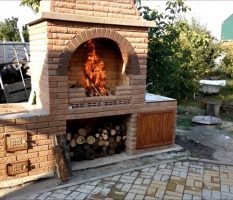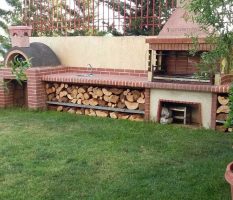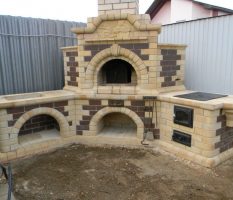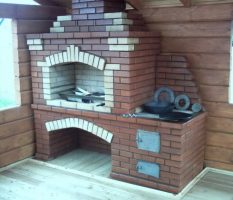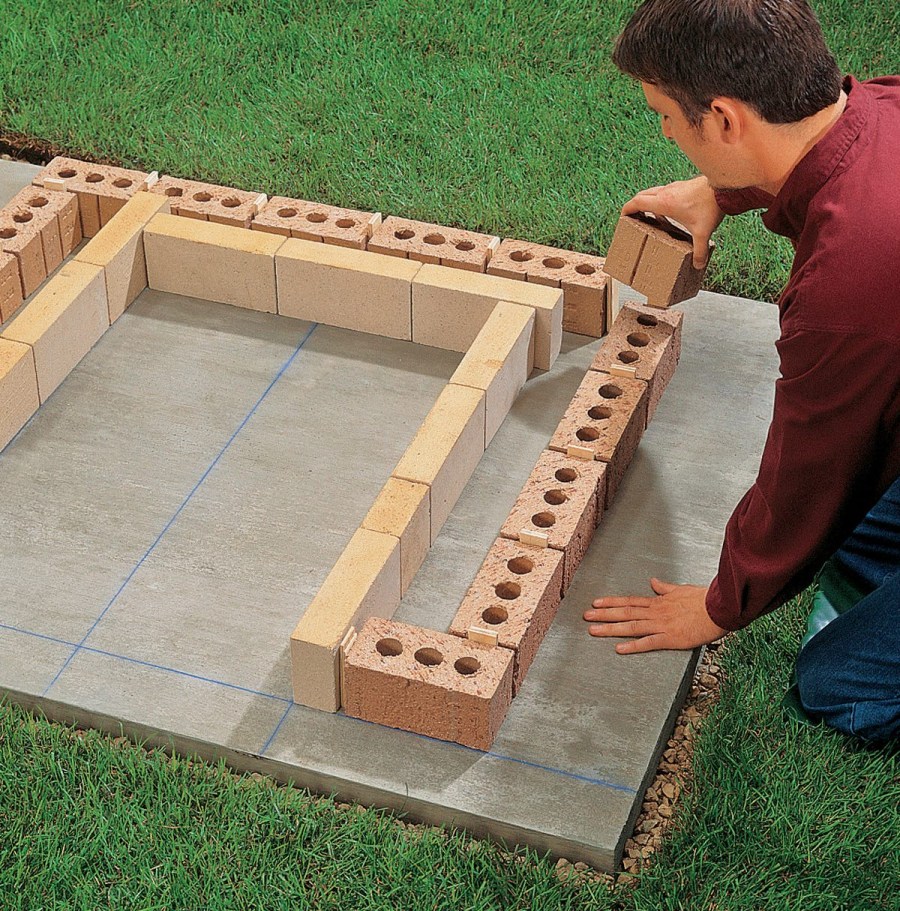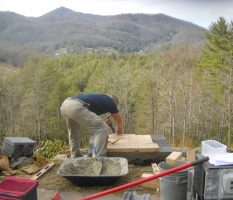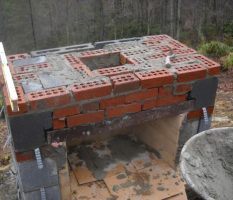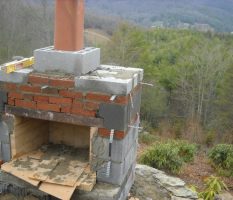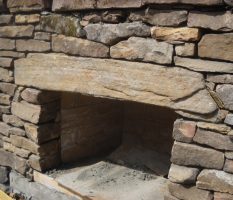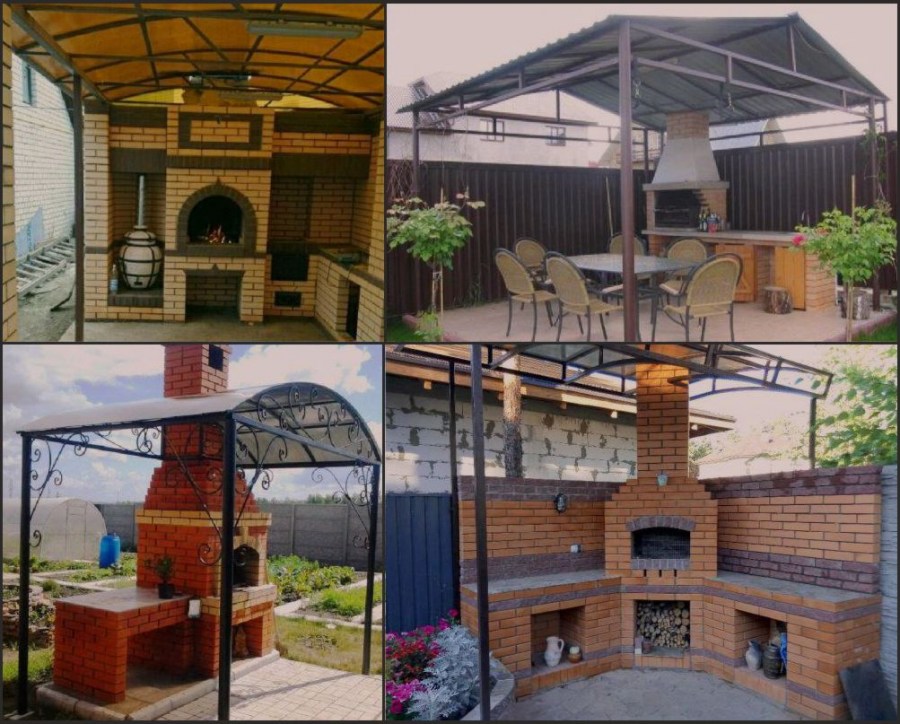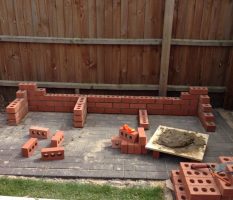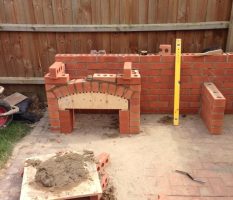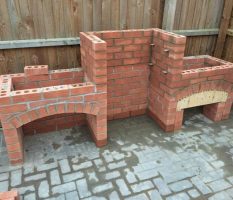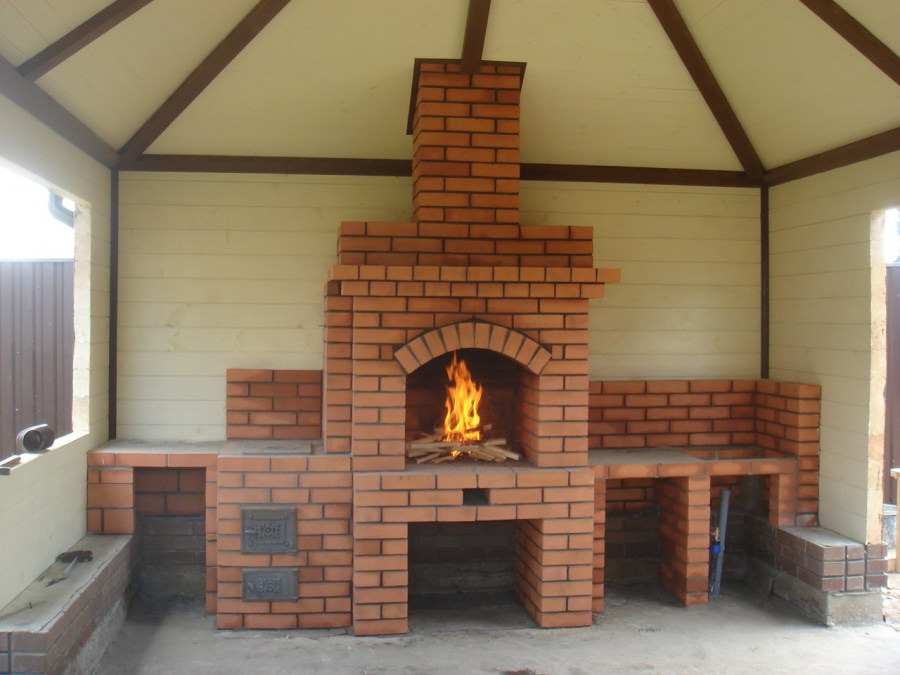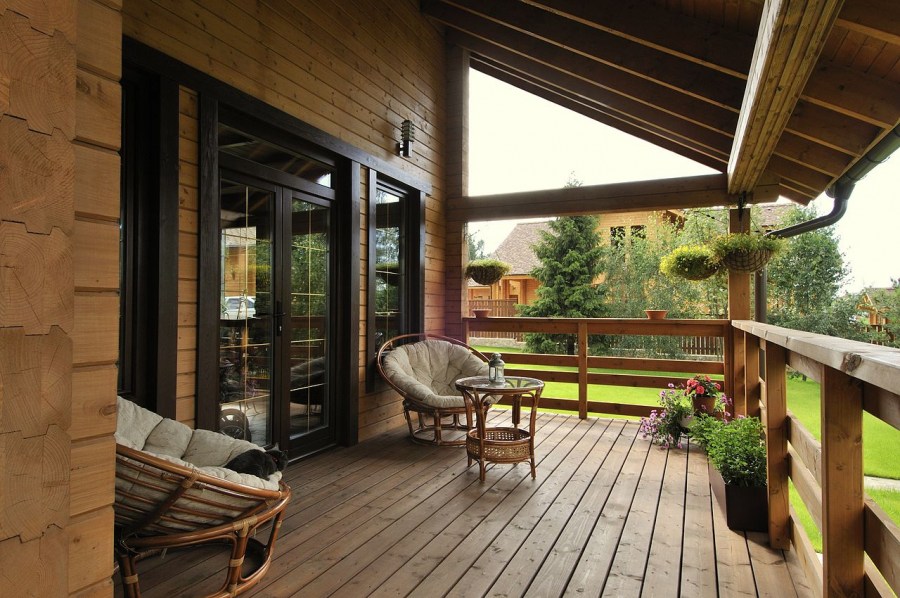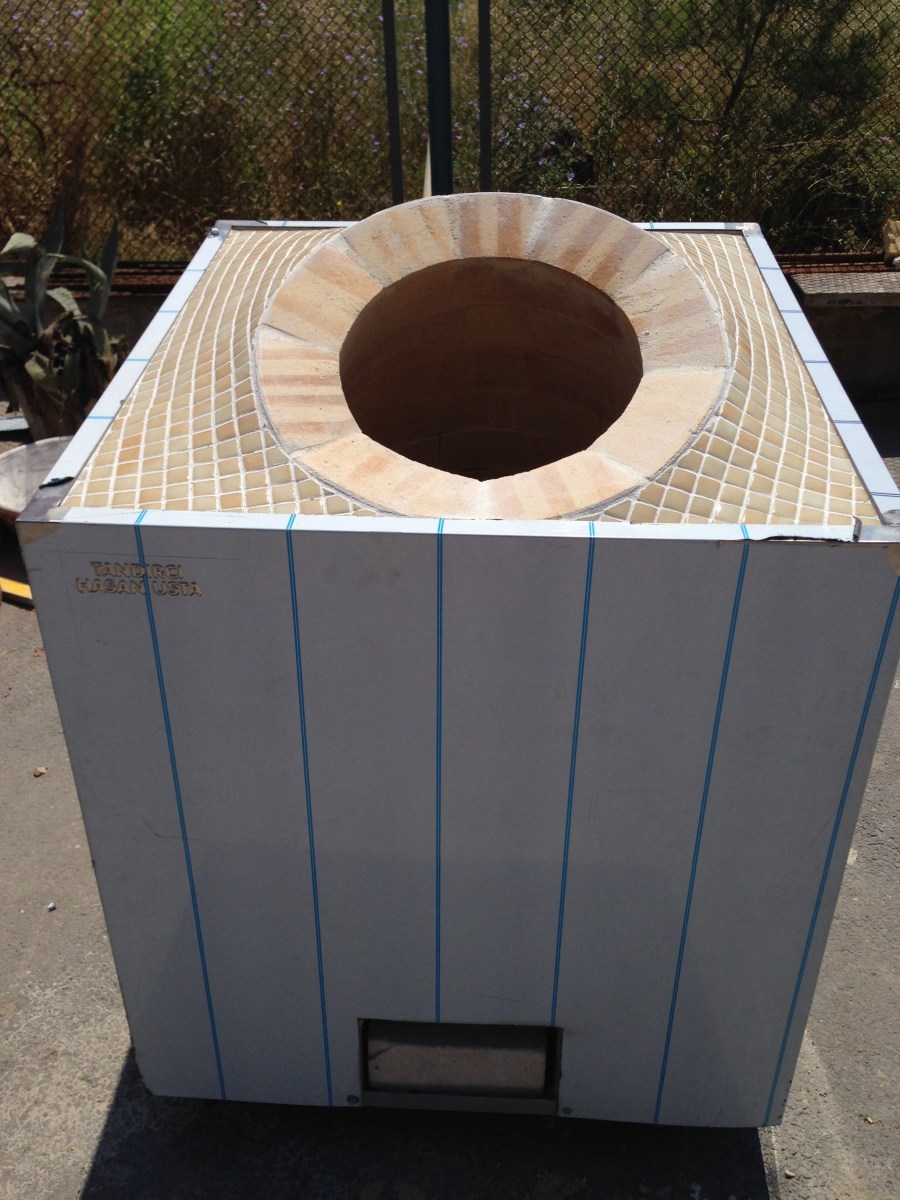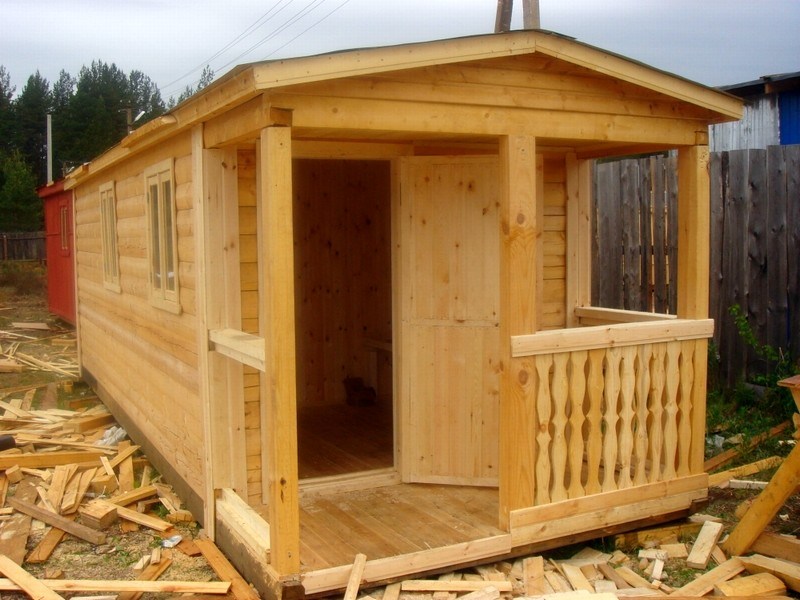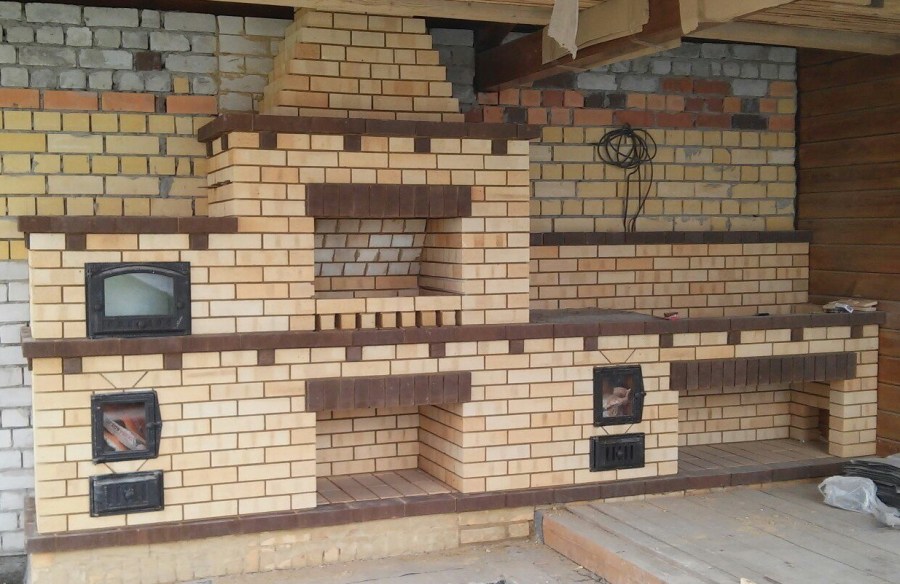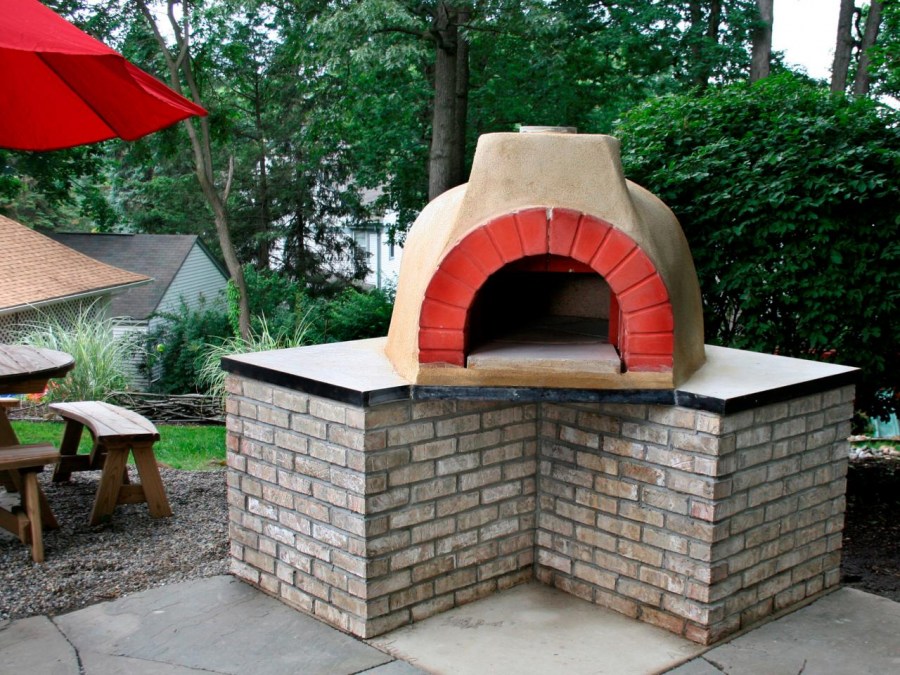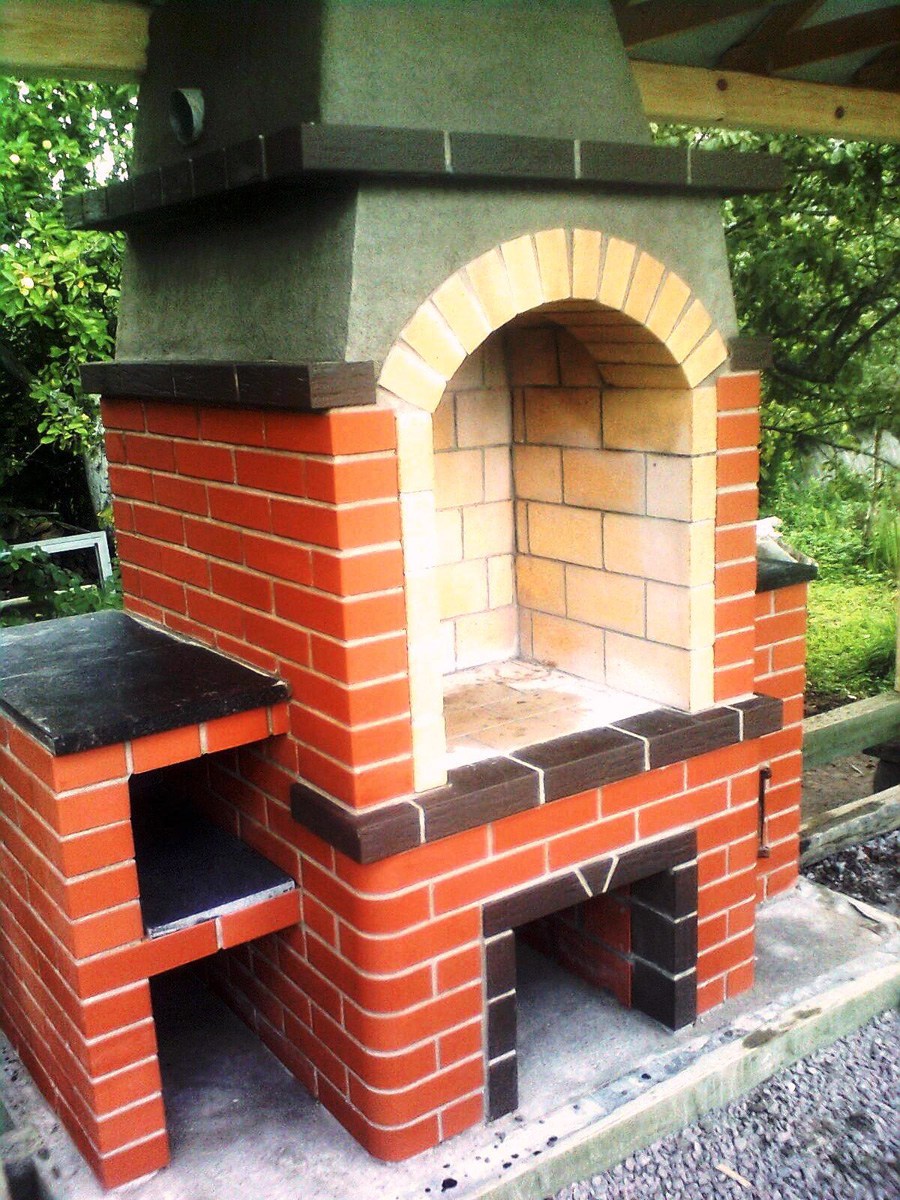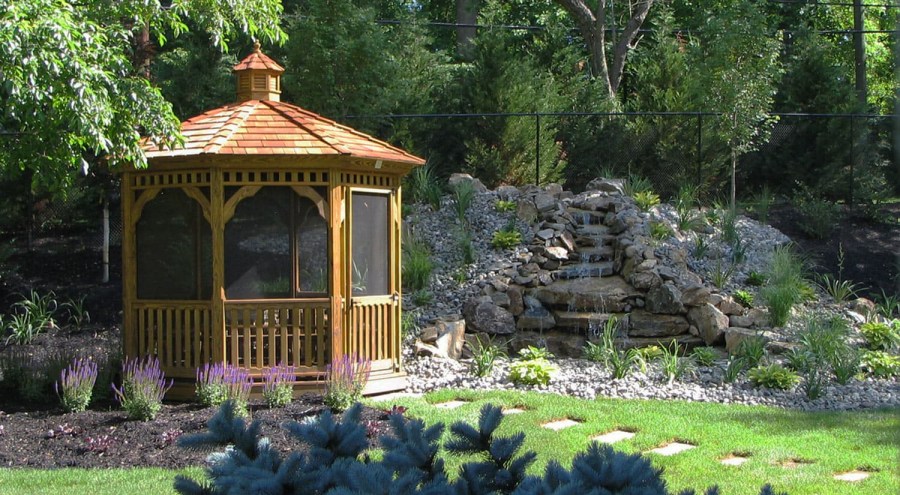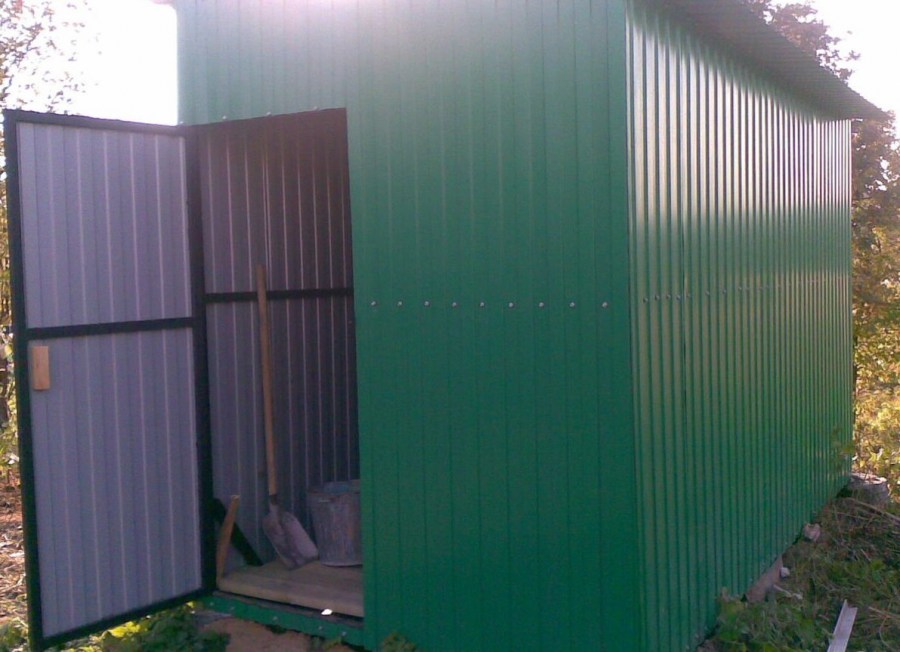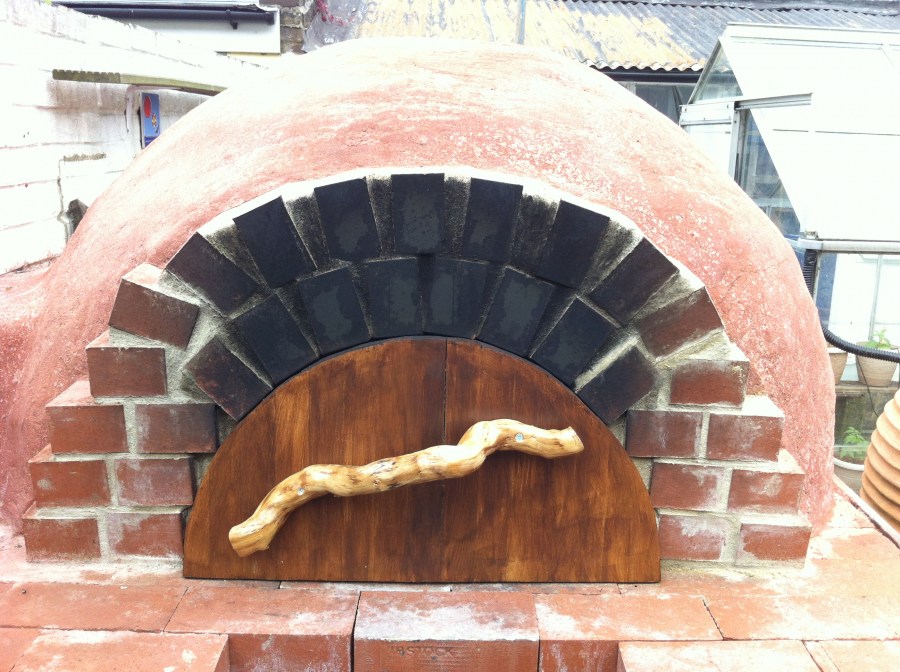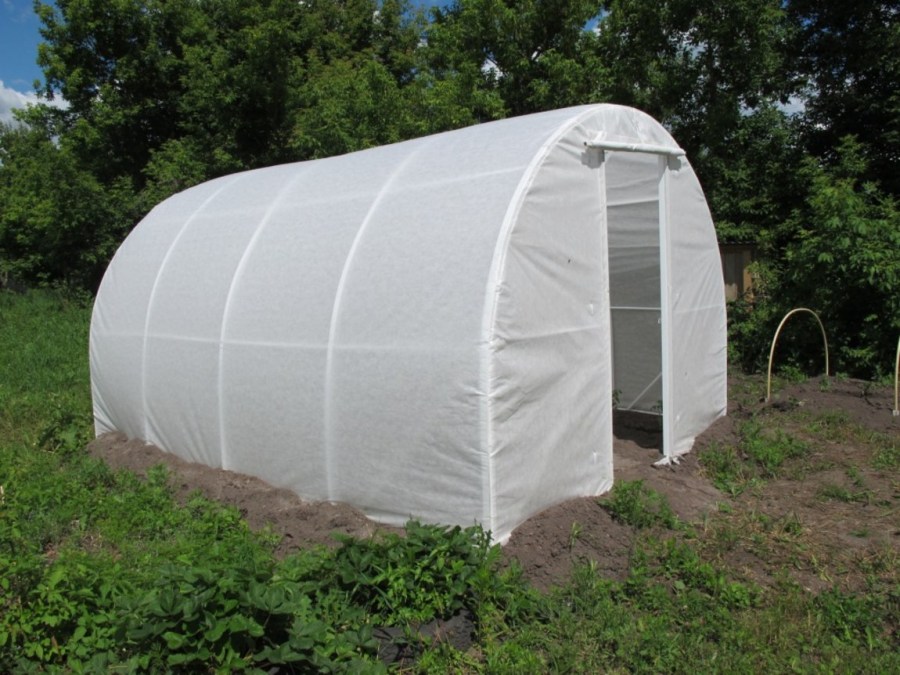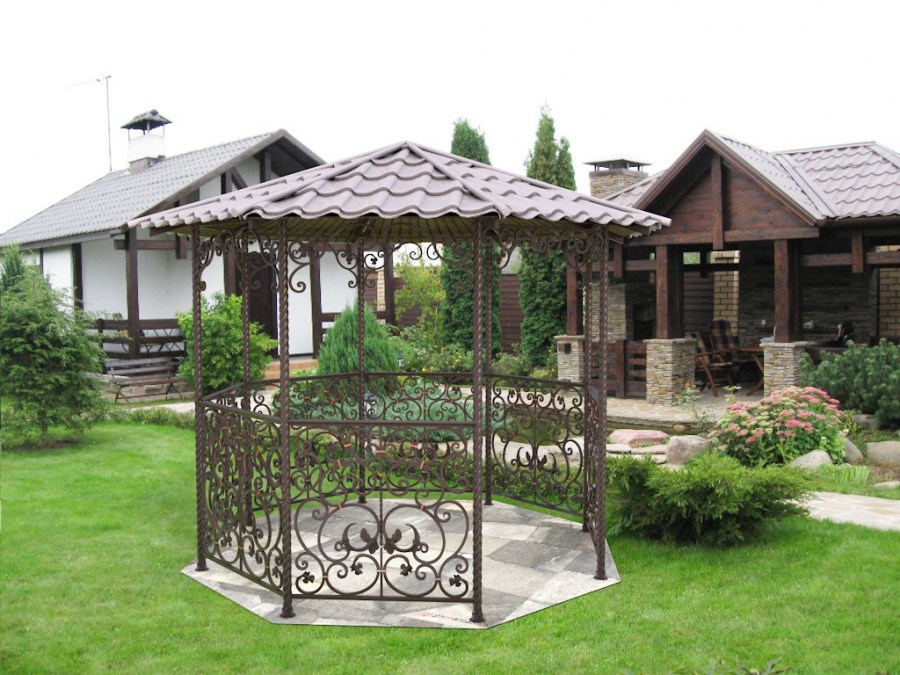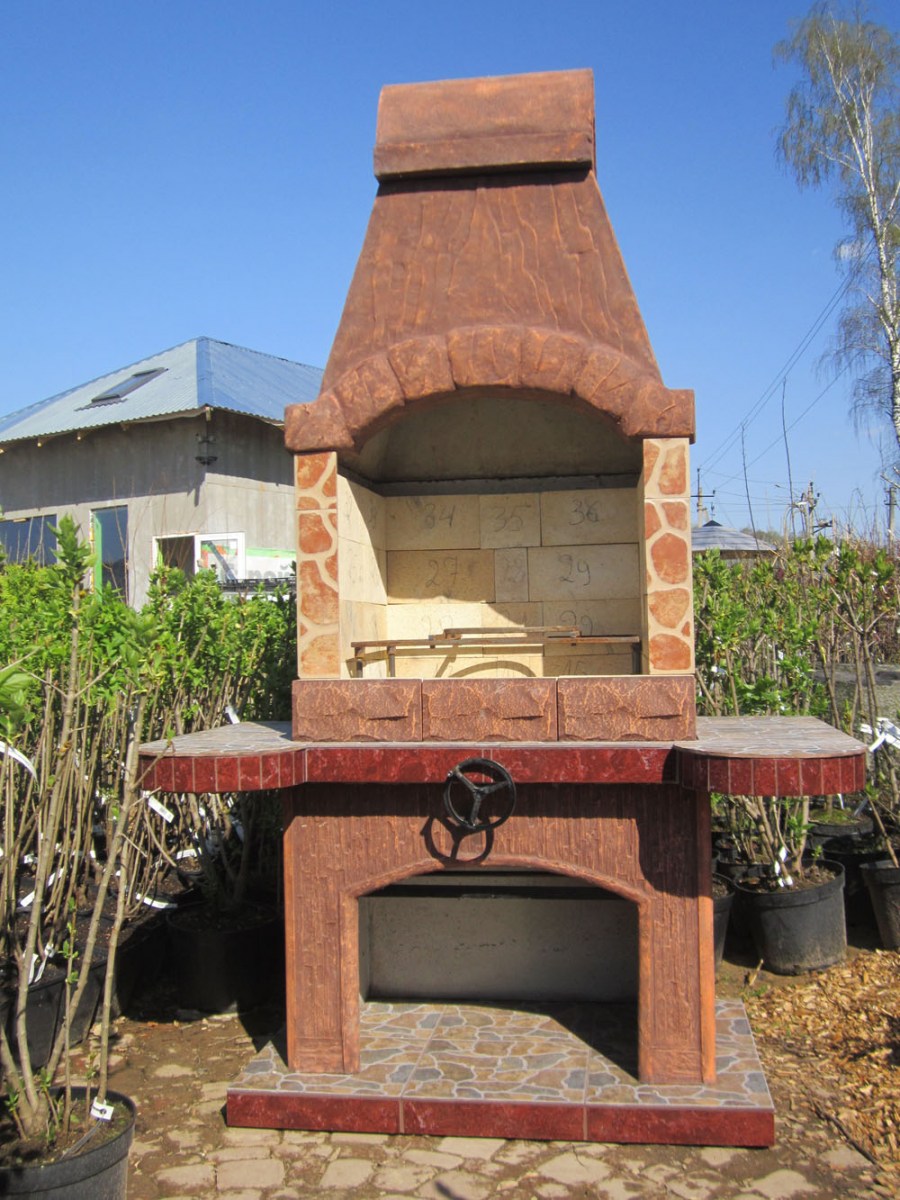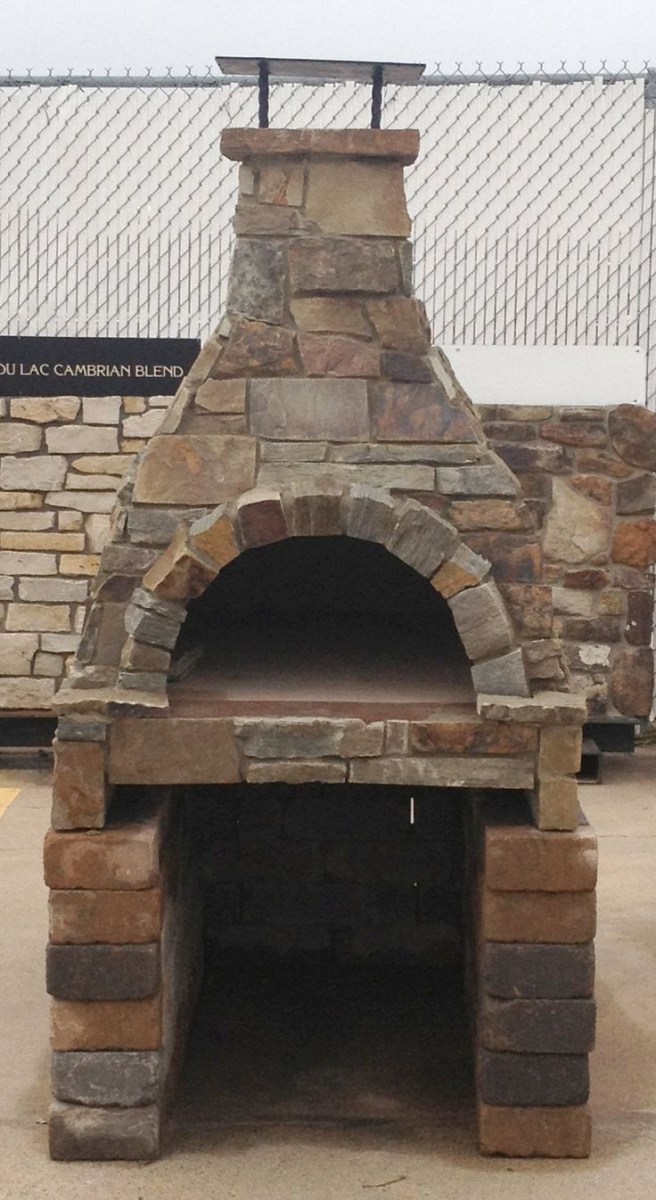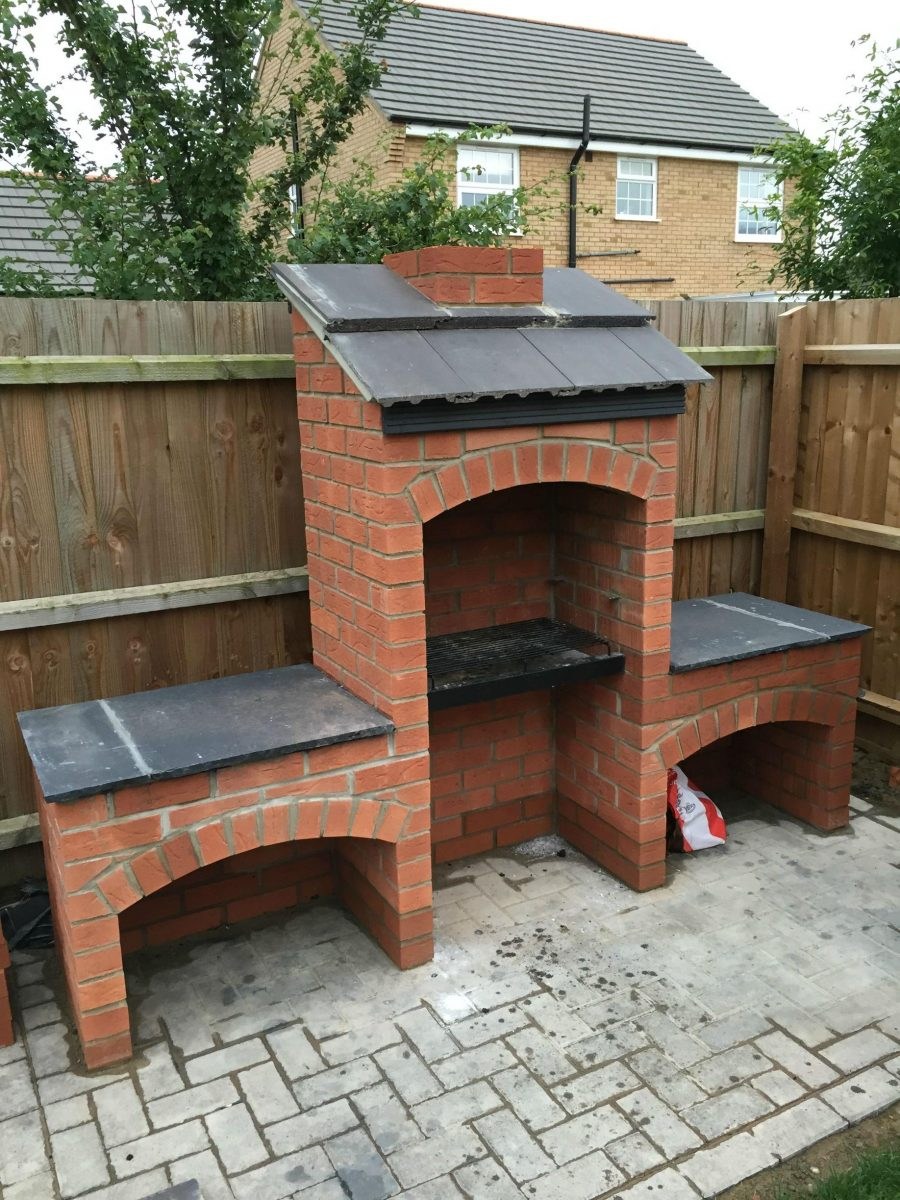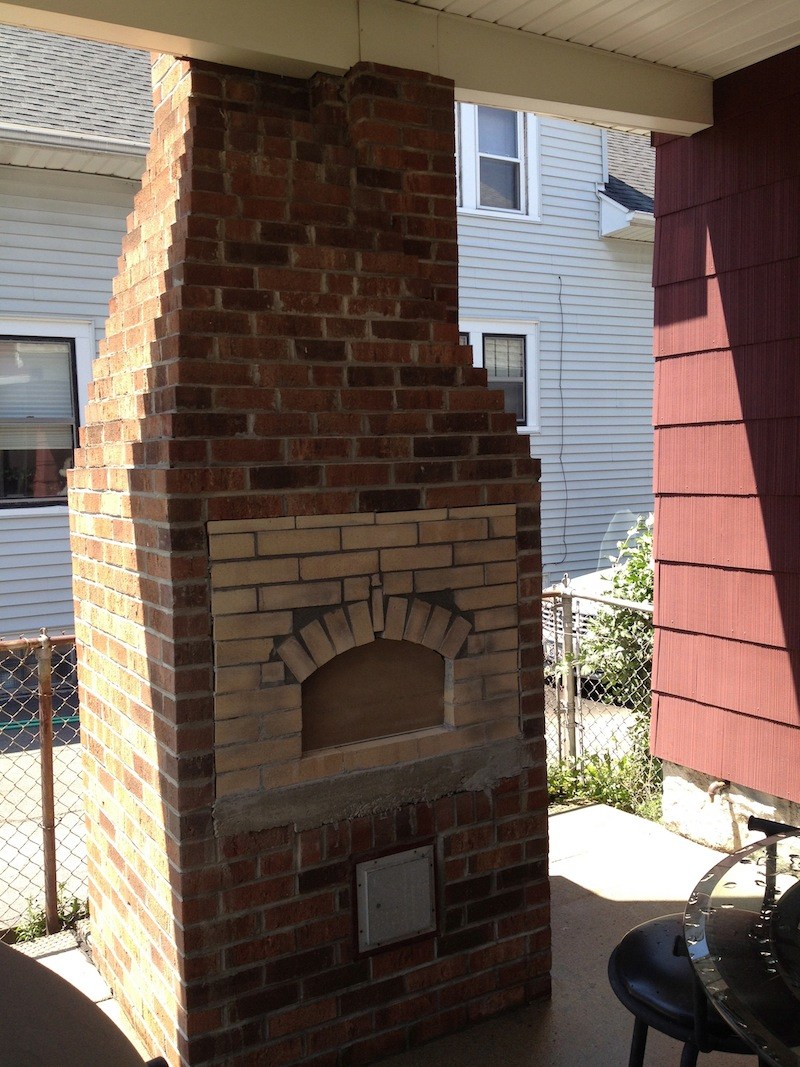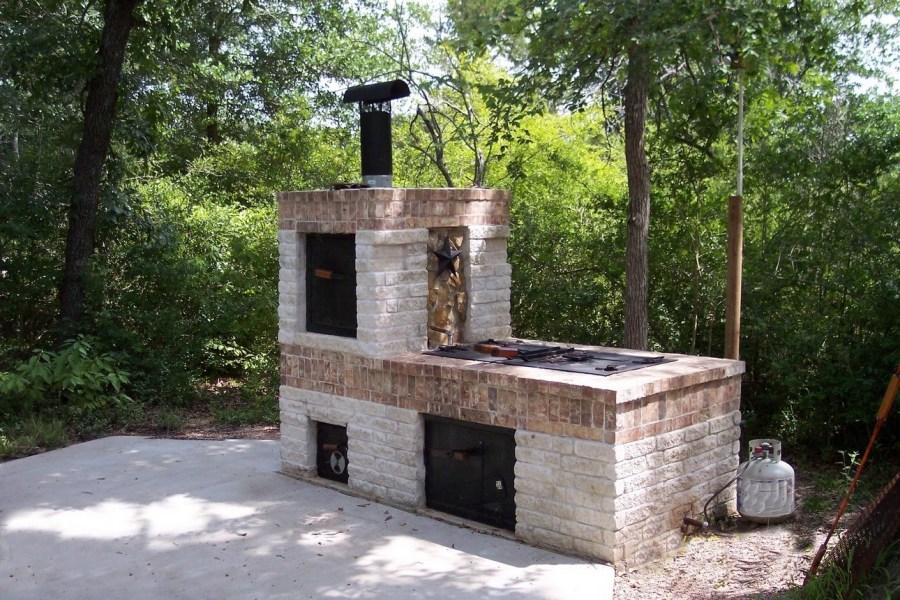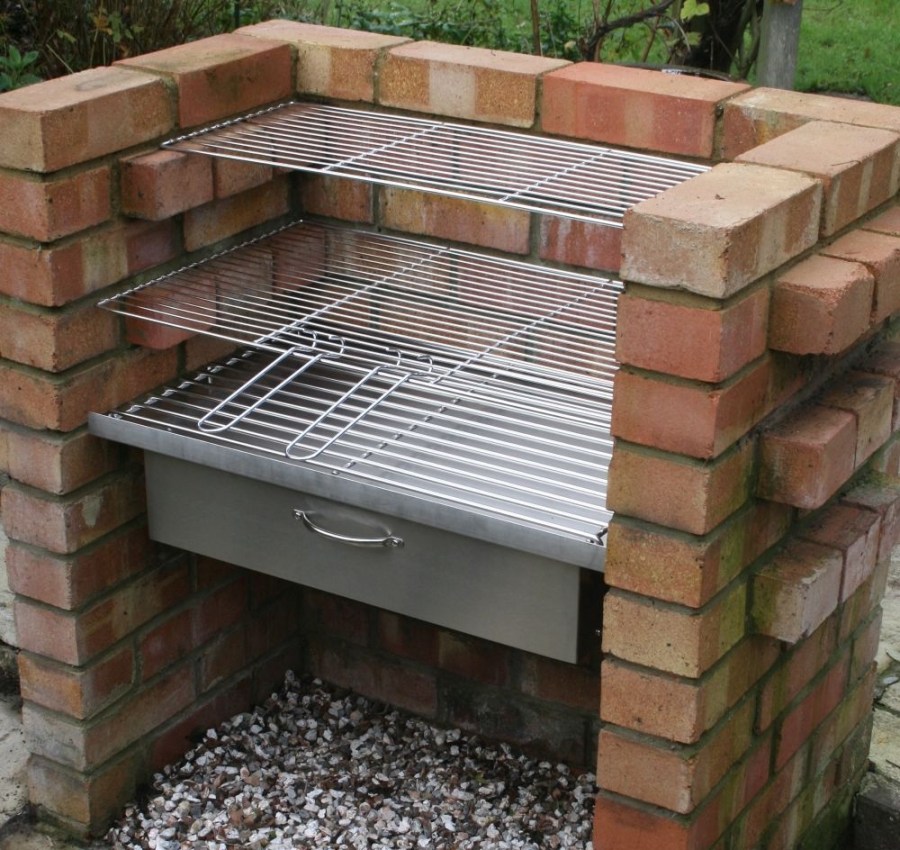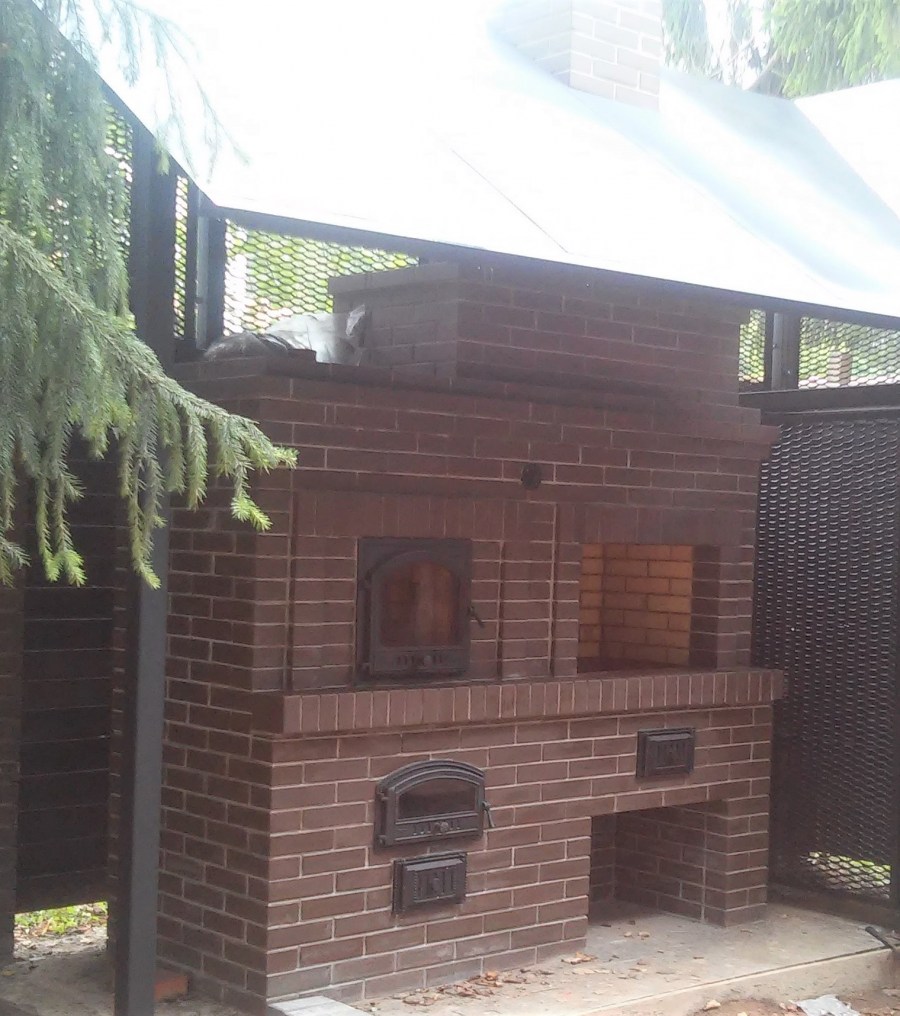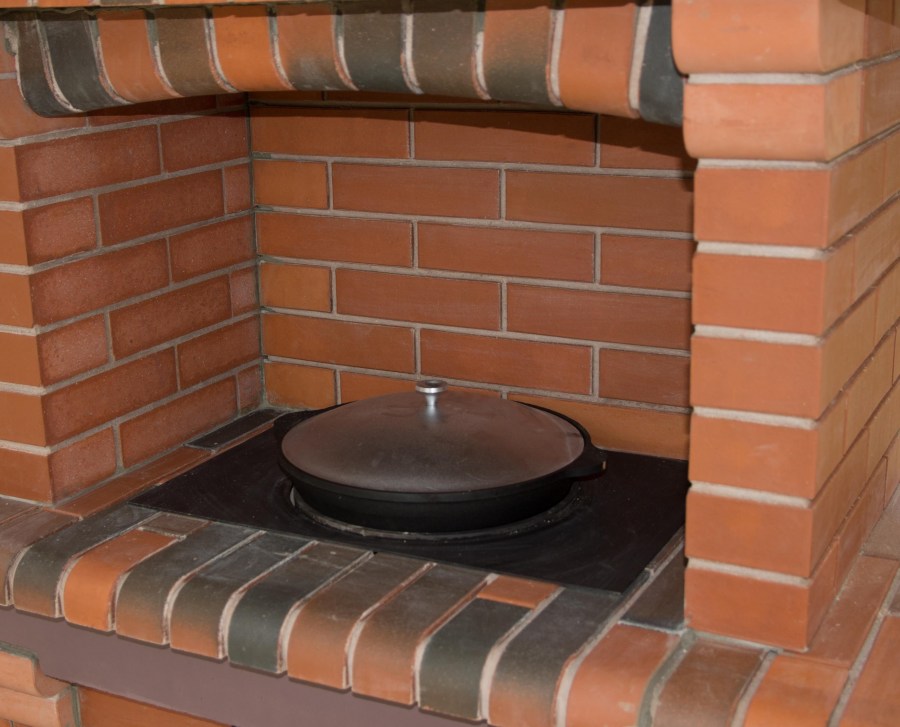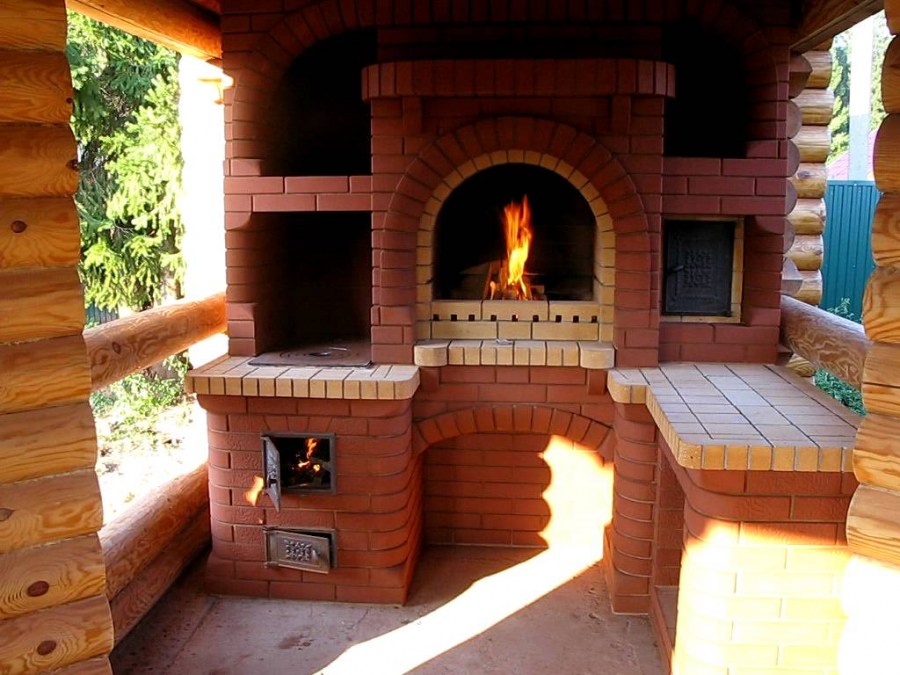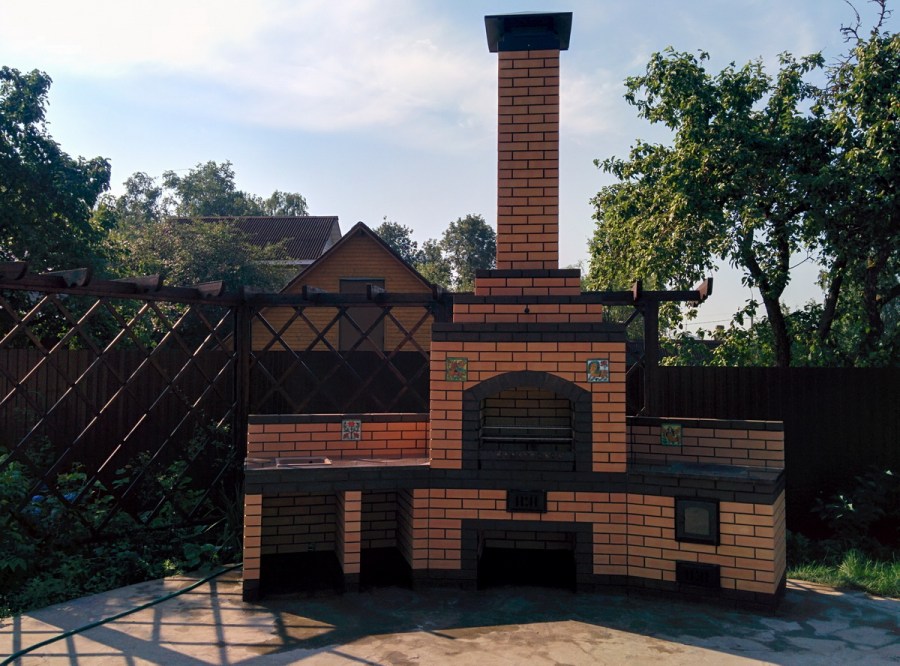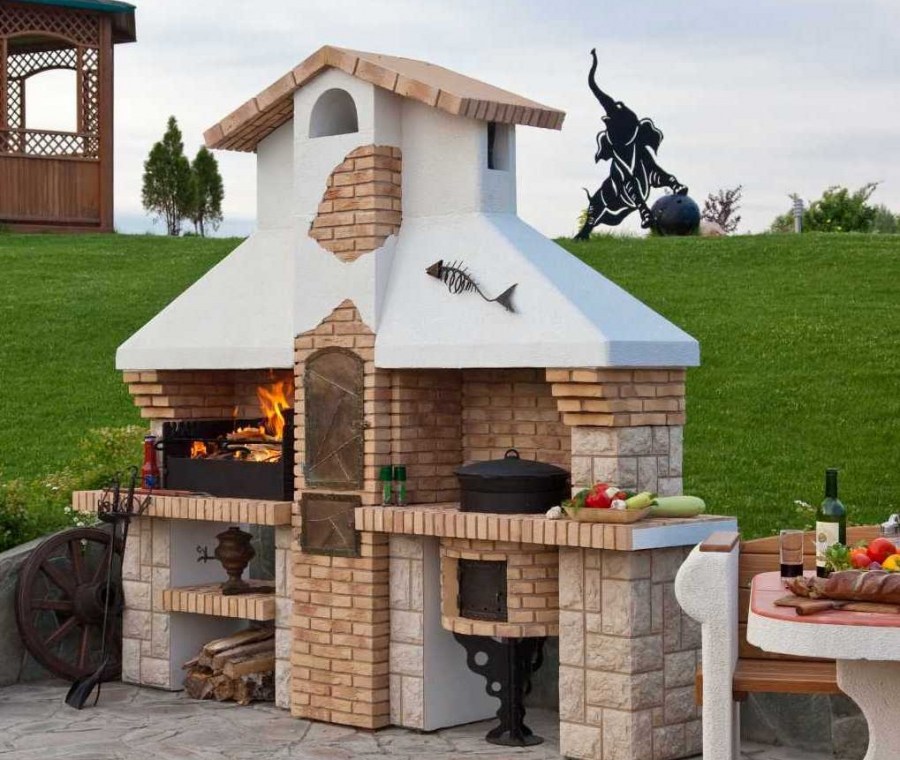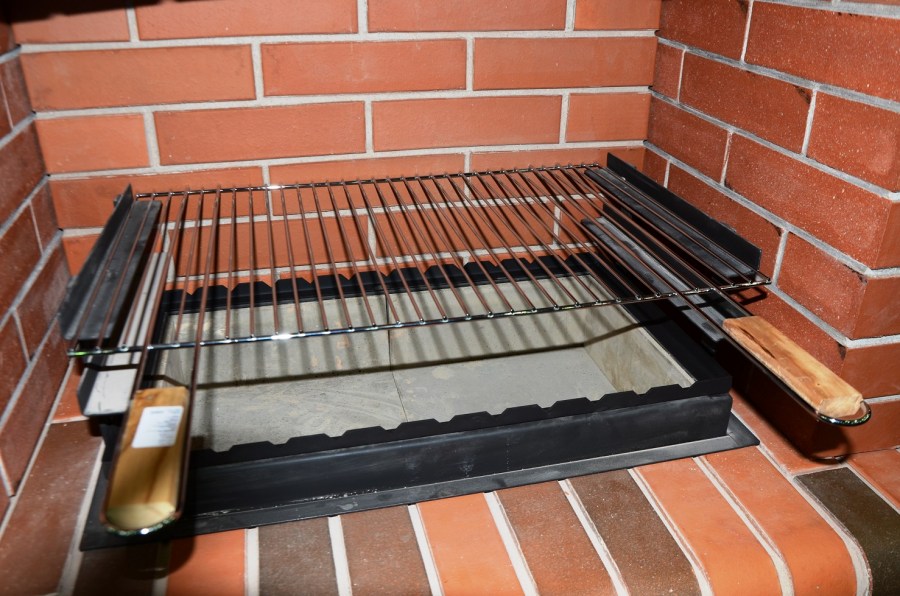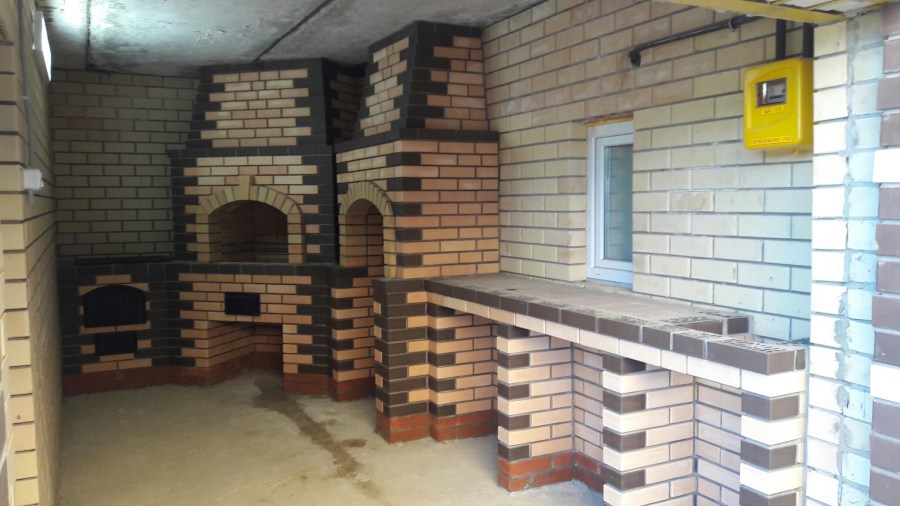DIY bricked barbecue - step by step instructions for beginners (125 photos)
Every happy owner of a country house, or at least a summer residence, where he spends all his summer weekends, sooner or later comes to the idea that for complete happiness he lacks a barbecue or barbecue. In essence, a barbecue is such a barbecue.
Today, without a headache and worries about the loyalty of your barbecue calculations, you can choose and buy a ready-made project kit not only with drawings and assembly instructions, but also all the necessary materials for its construction. A complete set of bricks or stone elements that can be easily assembled according to instructions in 1-2 days. Entrust the construction of a brick barbecue to professionals who have been designing and building a brick barbecue for more than 10 years.
I must say that in contrast to the usual barbecue - a simple device for frying kebabs, this building is much more multifunctional. In essence, it’s just a stove, which, unlike our usual Russian stoves, is not located inside the house, but outside.
Since it is intended for the preparation of gourmet dishes in the fresh air, the attitude to it should be no less serious, therefore, first of all, you need to choose a suitable brick oven scheme. Multiple brick BBQ photos on the Internet will help solve this problem.
First of all, you need to determine the installation location. Brazier should be not far from home. In principle, you can go further away, but the need to run back and forth for dozens of meters from the house to the barbecue and back to carry food, water and fuel will completely ward off the desire to arrange holidays.
The barbecue area must be flat, because it is a rather large brick structure with a large mass, it is not much different from our traditional Russian stove. Absolutely all types of stoves are complex engineering structures.
In essence, the furnace is the house of fire, and the more responsible it is to erect it, the more effective the flame will work in it. A barbecue is a complex brick structure with a large mass of its own, so you need to bring a foundation under it.
Foundation laying
Under the foundation, a hole is dug with a depth of no more than half a meter and is filled with gravel about half. After this, gravel must be carefully tamped. The result is a kind of pillow, along the perimeter of which the formwork is installed.
Then the fittings are installed. As reinforcement, iron rods or steel mesh can be used. The reinforcement must in no case protrude beyond the upper edges of the formwork.
After that, concrete is poured into the formwork. After about three days, after the concrete has hardened and dried, the formwork is removed. The foundation of the future furnace is ready.
Woodcutter
As a rule, stationary barbecues are made two-level. The first level, located directly on the foundation, is a room in which the firewood, the so-called: firewood, is stacked. The presence of a woodcutter, located directly under the barbecue, allows you to always have at hand the necessary supply of dry firewood.
Refractory brick is used as the main material, since it does not crack during the operation of the furnace; for facing the barbecue (if it is assumed), it is necessary to use a special facing brick. Refractory chamotte clay is used as a binder solution.
Before starting to lay a brick on a concrete base, it must be cleaned of dirt and dust, if this is not done, the adhesion of the bricks to the foundation will be unstable, since there will be a layer of dust and dirt between the bricks and the mortar.
After the surface on which the brick is supposed to be laid will be cleaned, it must be moistened with water, a mortar is applied and the first row of bricks is laid out.
Masonry is carried out in the generally accepted way: on the edge and in a run. This method allows for increased strength of the entire structure, with minimal material consumption. Thus, approximately ten or eleven rows are stacked; chamotte clay is best used as a binder solution.
The sand-cement mixture is not suitable for this purpose, because it will not be able to withstand high temperatures in contact with open flame.
Portal
The second level of the barbecue oven is the portal where the barbecue is installed. The location of the portal on the second level is due to the convenience of the cooking process: a person standing at the barbecue in full growth, less tired. The second level of the barbecue fireplace should begin with the tenth or eleventh brick from the base of the foundation. In this case, a person of average height will not experience any discomfort during the cooking process.
Of course, every person who independently takes up its erection, tries to fold it so that it fits precisely his height, therefore, when deciding at what level to install the brazier, you should be guided by your individual preferences.
Having finished laying the woodcutter, it is necessary to separate its upper boundary from the second level, where the portal will be located. In order to distinguish between a woodcutter and a portal, an ordinary steel corner and a metal grill are used as overlapping, which should fit snugly against the upper bricks. If you wish, you can make a cornice in the form of a decorative arch on the border of the levels of the woodcutter and portal.
The bottom of the portal is laid out of refractory brick, which is laid on a metal grate. The seams between the bricks are tightly sealed with chamotte clay.
Bricks should fit snugly together, forming an absolutely flat, fixed surface. Then the first rows of the rear and two side walls of the portal are laid out.
Chimney tooth
After laying the first two rows, the so-called chimney tooth is laid out. A chimney tooth is the back wall of the portal, laid out not at a right angle of 90 degrees, but at an angle of about 60 degrees. The presence of a chimney tooth helps to accompany the smoke in the right direction, through the pipe and prevents the blowing of wind into the portal.
You can get the desired slope by treating it with a grinder, sawing off a certain part from each brick of the first row at the right angle. The configuration of the side walls should correspond to the inclination of the tooth and be integral with it.
The top row of the tooth should be located just above the portal arch. In this position, it will contribute to the removal of smoke into the chimney, preventing its emission through the portal arch.
Skewer and other devices
In order to provide maximum functionality to your brick barbecue, it should be equipped with as many devices as possible. A commonplace device for cooking barbecue is not worth it to start a grandiose project on the scale of a country house for it.
In the process of laying the hearth for picnics, it would be nice to provide also a skewer, on which you can cook a whole small lamb. It will also be useful to attach a device on which you can hang a cauldron. In other words, a barbecue should become your summer kitchen, only much more functional.
In the process of laying the side walls of the portal somewhere at the level of the fourth or fifth brick, you need to make notches in the bricks on both sides opposite each other.
In order to prevent them from moving relative to each other, a pipe is threaded into the recesses, which must be there until the end of all work. Today, many have beautiful stoves in the country, but not many people have one in which they can take and fry them on a spit.
Trumpet
Then, a pipe is laid out of the refractory brick, as a mortar, chamotte clay is also used. In the process of masonry, it is necessary to ensure the absence of cracks and cracks in it, timely coating each of them with a solution. Compliance with this rule will provide the stove with good traction and protect it from smoke in the eyes.
The pipe should be high enough so that the smoke from your beauty does not fall into the windows of your own home, and also into the windows of your neighbors.
Decoration
Remained mere trifles - the decorative design of your hearth. For decorative use decorative brick. It is not refractory, its main function is to decorate your new hearth.
Cladding barbecue fireplaces with decorative bricks, you should leave an air gap between the refractory and decorative bricks. Refractory and decorative bricks expand differently when heated. Decorative brick will begin to crumble over time from frequent heating. The air gap allows to leave the decorative coating cold.
Brick bbq photo
DIY brazier: drawings, instructions, recommendations + photos of ready-made ideas
Design of a plot of 8 acres - 85 photos of individual projects and design options
Design of a country house plot: 105 photos of the best decoration ideas
Join the discussion:




